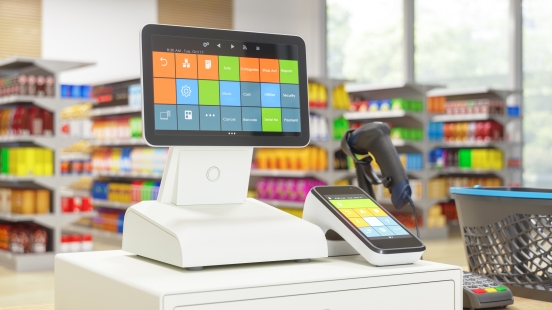Mastering POS Systems: Essential Tools for Retail Innovation and Growth
In today’s fast-paced retail sector, businesses increasingly rely on efficient POS systems to manage transactions, inventory, and customer service seamlessly. This article examines the structure, essential features, and varied applications of modern POS systems across multiple retail environments.
In today’s fast-paced retail sector, businesses increasingly rely on efficient POS systems to manage transactions, inventory, and customer service seamlessly. This article examines the structure, essential features, and varied applications of modern POS systems across multiple retail environments.

What Exactly Is a POS Retail System?
A Point of Sale (POS) retail system is a comprehensive setup that enables businesses to efficiently process sales and handle operational tasks. It integrates hardware such as barcode scanners and receipt printers with specialized software to track inventory, customer data, sales reports, and employee performance. The system’s primary goal is to facilitate rapid, accurate transactions while recording all sales data in real-time.
Key Components of a POS System
Hardware:
Modern POS systems typically include electronic cash drawers, high-speed receipt printers, barcode scanners, weighing scales for bulk items, and touchscreen interfaces. These devices streamline face-to-face sales and help reduce manual errors.
Software:
POS software manages inventory control, monitors sales trends, tracks employee productivity, and enhances customer engagement. Automation and third-party integrations further boost efficiency.
Payment Solutions:
Support for multiple payment methods, including credit and debit cards, contactless (NFC) payments, and mobile wallets, ensures customers have flexible, secure payment options.
Analytics and Reporting Tools:
Detailed real-time reports on stock levels, customer behavior, and sales patterns enable businesses to optimize inventory, marketing strategies, and pricing decisions.
Categories of POS Systems
Different retail models call for tailored POS solutions:
1. Traditional (On-Premise) POS Systems:
Installed locally with dedicated hardware, these systems are ideal for large retailers requiring high-volume processing and detailed reporting, offering robust data storage and reliability.
2. Cloud-Based POS Systems:
Cloud systems store data online, accessible from any internet-connected device. Popular with small and mid-sized businesses, they offer scalability, cost savings, and simple installation.
3. Mobile POS Systems:
Designed for mobile devices like smartphones and tablets, these systems are perfect for businesses on the go—such as market stalls and food trucks—allowing sales directly at the customer’s location.
Top POS Software Platforms
Choosing the right software is critical for smooth operations:
-
Square POS: Known for ease of use, Square provides inventory management, customer engagement, and analytics, suited for small to medium businesses with mobile payment support.
-
Shopify POS: Tailored for omnichannel sellers, Shopify integrates physical and online stores, offering strong multi-channel sales tracking and customer insights for growing brands.
-
Lightspeed Retail: Offers advanced inventory management, customizable reporting, and multi-location support, ideal for fashion, specialty, and multi-store retailers.
-
Vend POS: A user-friendly cloud-based platform known for reliability and integration with Xero and Shopify, perfect for boutiques and independent retailers.
Free POS Software Solutions
For startups and small businesses, free POS options provide core features:
-
Loyverse: A cloud-based solution with real-time inventory tracking, customer management, and sales analytics, suitable for cafes, salons, and small retail outlets.
-
Imonggo: Provides basic product listing, sales tracking, and customer transactions, perfect for small retailers needing simple and reliable entry-level POS software.
Benefits of Implementing a POS System
-
Transaction Accuracy: Automation reduces manual errors, ensuring reliable sales data.
-
Enhanced Customer Experience: Quick checkout and flexible payment options improve satisfaction and loyalty.
-
Streamlined Inventory Control: Real-time updates prevent stockouts and overstocking, optimizing supply chain management.
-
Actionable Insights: Analytics support better marketing, purchasing, and pricing decisions.
Challenges in Deploying POS Systems
-
Initial Costs: Hardware and software setup can require significant investment, especially for large or multi-location retailers.
-
Training Requirements: Employees must be trained on new systems, which may cause temporary workflow disruptions but is vital for efficiency.
-
Security Concerns: Protecting sensitive payment and customer information requires strong encryption, firewalls, and access controls.
Frequently Asked Questions
Q1: How do traditional and cloud-based POS systems differ?
Traditional POS uses local hardware, suited for high-volume stores, while cloud-based POS offers remote access and scalability, fitting smaller or mobile businesses better.
Q2: Can smartphones be used as POS terminals?
Yes, mobile POS apps turn smartphones and tablets into portable sales systems, ideal for on-the-go vendors.
Q3: Are free POS systems effective?
Yes, systems like Loyverse and Imonggo cover essential needs; paid versions provide enhanced features and integrations.
POS Systems in Various Industries
-
Restaurants: Manage tableside ordering, kitchen displays, and payments efficiently.
-
Retail Stores: Streamline checkout, inventory control, and staff performance tracking.
-
Service Providers: Support appointment booking, retail sales, and contactless payments.
Feature Comparison Table
| Feature | Square | Shopify | Lightspeed | Vend |
| Inventory Management | Yes | Yes | Advanced | Basic |
| Multi-Channel Sales | Limited | Robust | Moderate | Limited |
| Reporting Tools | Full | Insightful | Custom | Standard |
| Ease of Use | High | Medium | Moderate | High |
Final Thoughts
Selecting the ideal POS system depends on business size, technical needs, and growth plans. With options from mobile to cloud-based platforms, retailers can improve transaction speed, gain valuable insights, and elevate customer experience. A well-chosen POS solution supports operational efficiency and long-term success.
References:
https://www.enkash.com/resources/blog/what-is-a-pos-system-and-how-does-it-work/
https://squareup.com